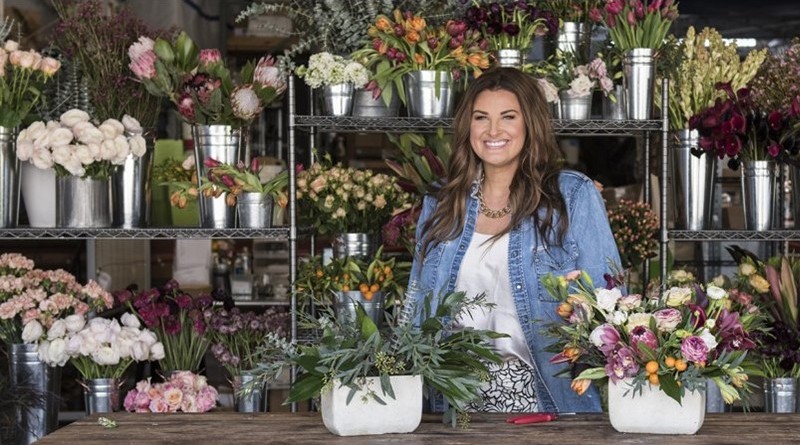How This Founder Went From $411 in the Bank to a $23 Million Flower Powerhouse
In 2010, Christina Stembel had the itch. She wanted to start a business that was massive but sustainable, fast-growing but bootstrapped. She set her sights on floral bouquets, founding Farmgirl Flowers with the aim of cutting into FTD’s and ProFlowers’ market dominance. (Other San Francisco-based upstarts, such as Bloom That and the Bouqs Co., entered the field later.) For Stembel, launching without outside investment felt natural, but less than two years in, her bank accounts were empty and she was ousted from her home office. Fortunately, just as the situation became dire, she got an unexpected sign that things were about to turn around. –As told to Christine Lagorio-Chafkin
I came from commodity crop country in Indiana, where farming of corn and soybeans was vital to the community’s existence. When I came out to San Francisco, I loved the city’s startup culture–that individuals were just taking whatever industry that hadn’t changed in at least 20 years and rethinking it, making it better. I wanted in: I was having about five business ideas a week. I wanted it to be something that I thought had a really positive impact in the world, and I wanted to solve a problem in a new way. But I also wanted to be able to bootstrap.
I had $49,000. I kept coming back to agriculture. I knew that in California, flowers had been a big segment of agriculture until the early ’90s. Floral bouquets are a huge industry with a broken model that nobody has come in and disrupted for more than 20 years. I hated the whole experience–and the boring end product–when I’d send my mom flowers. I knew I could do it better, for younger, more savvy consumers.
I gave myself either two years or until I ran out of money to see if it would work. Everyone I knew thought I was nuts–but I think they were also relieved because then I might stop talking their ears off about business ideas.
I’d wake up at 3 in the morning and go to the flower market. I’d bring the flowers back home, and work from my dining room table. The space was about 100 square feet. I taught myself from YouTube how to process flowers, and then I created the flower arrangements that I would want to receive myself. Then, all afternoon I would go to coffee shops around the city with bouquets. If the coffee shop would let me put out the bouquet, I placed marketing cards near it. I’d go back every week and see how many cards were taken before deciding whether it was worth putting out another arrangement. Five Starbucks stores in the most densely populated areas of San Francisco drove almost all of my early business.

I had no marketing budget for the first two years. So I also went to two or three networking events every night, also with a bouquet and cards, and asked if I could put them out at the registration desk or front desk. It was all just completely guerrilla-style, with some word-of-mouth marketing.
After a year and a half in, I had only $411Â left in the bank. It was really lean. I’d even switched from coffee to Lipton tea because it was like 6 cents per teabag rather than dollars per cup. Then my landlord, who was a corporate attorney, found out I was running a business out of my apartment. It wasn’t tough to tell: I was using my big bay windows as a makeshift flower cooler when it was cold out. I’d open them up and block it off with a blackout curtain so the flowers stayed cold. I had to move the business out–and I did, but now I had two rents to pay. So it was hard. But I rented the smallest space I could at the San Francisco flower market, and somehow right at that time orders increased by just enough that we made the sales I needed to pay the bills. I never took any outside funding, so every move I made had to be profitable, immediately.

It wasn’t long before we went over the amount of bouquets I could make myself in one day, which was about 40 or 50. I hired my first employee. And that was wonderful–but it also was the scariest moment. Now it’s not just “maybe I can’t eat much this week.” Somebody else now is also relying on you for their livelihood.
Right around the time I was forced to move the business out of my apartment, at the end of 2012, there was a bright moment, though. As I was walking to my car to take some bouquets out for delivery one evening, a group of women saw me and walked over. “Oh, are those Farmgirl flowers?!” they asked.
They could tell from the signature burlap I wrap them in. I told them yes, they were Farmgirl, and one said, “I love Farmgirl!”
I got into my car and then just bawled my eyes out. It was the first time I’d seen someone recognizing my product, and my brand. She knew it just by the look, which is what I’d always been trying to make sure differentiated us. It was a moment when I felt I’d really achieved something. I thought, we’re gonna make it.
Last year we did $23 million in revenue. We have more than 100 people working with us, out of a huge warehouse in the Potrero neighborhood. We ship hundreds of bouquets a day across the United States.
SOURCE: Inc.com




